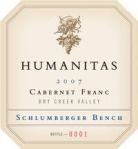What’s the value of my brand?
 This past week I had a lunch meeting at the Rutherford Grill with Joe Orlando, a Senior Valuation Expert with the Frank, Rimerman + Co. LLP Wine Business Service Group. Our conversation centered on the recent acquisition of the Inglenook brand trademark by Francis Ford Coppola. Coincidentally the original Inglenook Estate sits just across Hwy. 29 from the restaurant. I mentioned a comment that I had just read in the June
This past week I had a lunch meeting at the Rutherford Grill with Joe Orlando, a Senior Valuation Expert with the Frank, Rimerman + Co. LLP Wine Business Service Group. Our conversation centered on the recent acquisition of the Inglenook brand trademark by Francis Ford Coppola. Coincidentally the original Inglenook Estate sits just across Hwy. 29 from the restaurant. I mentioned a comment that I had just read in the June 2nd
2ndDecanter article on the changes at this iconic estate winery. In the story, Mr. Coppola is quoted as saying that the extended brand negotiations with The Wine Group ”ended in his paying more for the trademark than (he) did for the entire estate.” This launched an hour long discussion focused on the question that we’ve both frequently fielded from winery owners, GMs, CMOs and senior brand managers: ‘what’s the value of my brand?’
 There are two unique concepts that merge in this question, ‘value‘ and ‘brand‘. The idea of products (brands) creating value has continued to change since it was first formalized by Adam Smith
There are two unique concepts that merge in this question, ‘value‘ and ‘brand‘. The idea of products (brands) creating value has continued to change since it was first formalized by Adam Smith(the production theory of value), followed by David
 Ricardo (the labor theory of value). Both of these theories were further defined and differentiated by Karl Marx as use value and exchange value. These 19th Century constructs, conceived during the Industrial Revolution, are based on the tangible and identifiable costs (human and capital) of product production forming the basis of price, demand and profit as primary determinants of product value.
Ricardo (the labor theory of value). Both of these theories were further defined and differentiated by Karl Marx as use value and exchange value. These 19th Century constructs, conceived during the Industrial Revolution, are based on the tangible and identifiable costs (human and capital) of product production forming the basis of price, demand and profit as primary determinants of product value. The idea and practice of brand is thought to have originated in Old Norse times (Old Norse ‘brandr‘ – to burn) with the branding of livestock that established the concept of individual ownership. Wealth and value were based on the size and/or on the perceived desirability of the herd. Seen through the lens of current valuation best practices, branded products are now viewed through the prism of globalization layered with the idea of intellectual property and sifted through the filter of consumer choice.
The idea and practice of brand is thought to have originated in Old Norse times (Old Norse ‘brandr‘ – to burn) with the branding of livestock that established the concept of individual ownership. Wealth and value were based on the size and/or on the perceived desirability of the herd. Seen through the lens of current valuation best practices, branded products are now viewed through the prism of globalization layered with the idea of intellectual property and sifted through the filter of consumer choice. The definitions of both brand and value have and will continue to significantly evolve. The terms iconic (Scrarecrow, Screaming Eagle,Harlan) and meaningful (Paul Dolan, Benziger, Humanitas) are two words currently associated with ‘brand‘, which I would define as a
The definitions of both brand and value have and will continue to significantly evolve. The terms iconic (Scrarecrow, Screaming Eagle,Harlan) and meaningful (Paul Dolan, Benziger, Humanitas) are two words currently associated with ‘brand‘, which I would define as a ‘promise of perceived and/or actual deliverables transferred through commerce from a producer to a consumer.’ Today’s valuation professionals now focus on the terms tangible (fixed or physical assets, and products or services that provide a flow of revenues and/or profits) and intangible
‘promise of perceived and/or actual deliverables transferred through commerce from a producer to a consumer.’ Today’s valuation professionals now focus on the terms tangible (fixed or physical assets, and products or services that provide a flow of revenues and/or profits) and intangible(goodwill, patents, trademarks, intellectual property). So, any answer to this popular question has to take into account the idea of the qualitative and quantitative attributes of a winery’s branded products. Based on his 25 years of valuation experience, Joe agreed to take on this complex issue and share his knowledge of determining wine brand value with the readers/viewers of the AoD blog.
Brand Value

Brand Value (click on video to play)
Joe Orlando’s Brand Value Bullet Points
 Every brand marketer’s key function should be to focus on creating, building and driving brand value, as the foundation of any successful wine business venture. After more than 25 years of valuing business and individual intangible assets, I always come back to the following key “nuggets” that drive the value of a brand:
Every brand marketer’s key function should be to focus on creating, building and driving brand value, as the foundation of any successful wine business venture. After more than 25 years of valuing business and individual intangible assets, I always come back to the following key “nuggets” that drive the value of a brand:1. Qualitative Differences– What makes your brand different from others? If 5 wineries source grapes from the same vineyard, what drives the brand value for each winery?
- Winemaking?
- Label? Art driven?
- Story? Family heritage?
- Buzz (social networking sites)? Good old-fashioned word of mouth?
- Something else?
2. Quantitative Differences– Similar to the qualitative side of the equation, how do these differences translate into real numbers on how your brand compares to others.
- Price point?
- Wine scores?
- Market share?
- Visitors?
- Percentage of sales per distribution channel?
3. Real Value– While a real dollar value is difficult to conclude on, the key drivers include:
- Profitability – Does your brand make money on a stand-alone basis?
- Premium Built into the Price per Bottle – Using the scenario above with 5 wineries sourcing the same grapes, what is your price point over the other brands? Does that price point come at a cost? If so, see above.
- Premium over Generic – Fundamentally, as I talk through in my “Bayer” aspirin example, are people willing to pay a premium over what they consider a generic brand or, as a wine example, another brand of similar quality that lacks any brand awareness?
- Cost of Marketing – See above regarding profitability?
- Method of Distribution – Also related to profitability based on blended revenue per bottle (not price but revenue generated on average for each distribution channel).
- Inventory – While a bit counter-intuitive, a sold-out brand is worth more than one that has inventory to sell. Iconic wines have the ability to increase their direct to consumer sales and as a result, their average revenue per bottle and up-front cash flows.
 4. What We Know but Can’t Quantify – There is a somewhat dated but very pertinent book called I Know it When I See It. It was originally written in 1985 and updated in 1991, and has the subtitle of “A Modern Fable about Quality.” In a very simple way, the book deals with what we all know about something in terms of its impact on value but can’t put into words or numbers.
4. What We Know but Can’t Quantify – There is a somewhat dated but very pertinent book called I Know it When I See It. It was originally written in 1985 and updated in 1991, and has the subtitle of “A Modern Fable about Quality.” In a very simple way, the book deals with what we all know about something in terms of its impact on value but can’t put into words or numbers.Copyright© 2011 Agents of Disruption Blog™ All rights reserved.
No comments:
Post a Comment